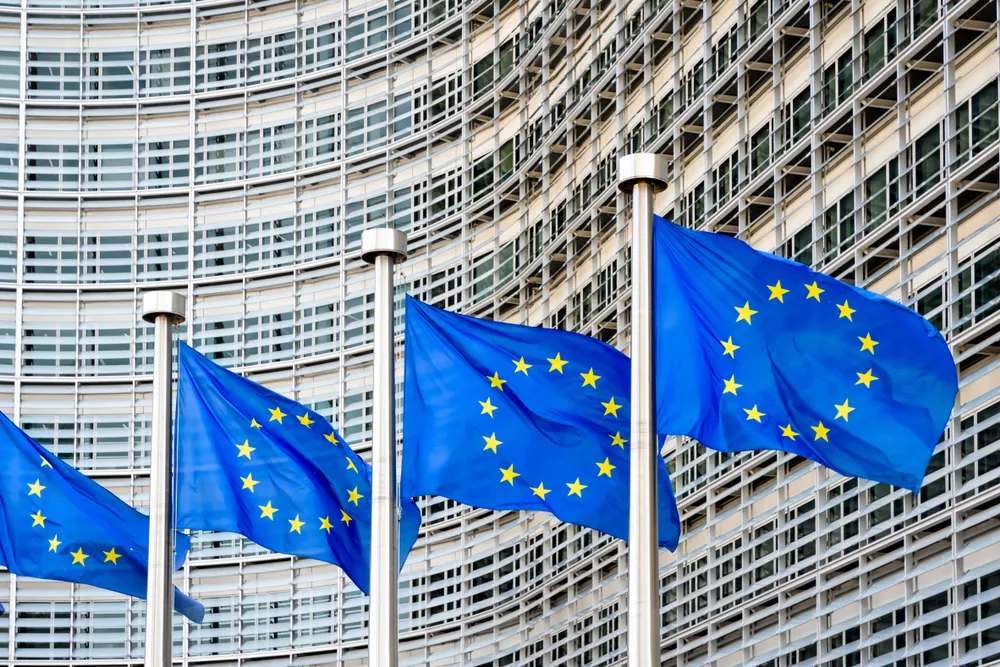The European Commission recently published new Guidance on merger control. The Commission invites Member States to refer certain concentrations that do not meet domestic merger control thresholds to the European Commission for scrutiny. This in particular concerns start-ups and other companies in innovative or digital markets (e.g. tech or pharma). Some important implications for businesses include ex post review of transactions up to 6 months post-closing and possible delays in transactions due to referral procedures. The criteria for referral, however, may be challenging to asses in respect to such innovative companies. The European Commission is offering comfort to businesses by opting for voluntary referrals, but it remains to be seen how efficient that will be for the companies concerned. Recently, a referral request was challenged by two merging companies before a Dutch court. Will that be the way forward in respect to the new Guidance?
Introduction to the new guidance
On 26 March 2021, the European Commission (Commission) published new Guidance on the application of the referral mechanism set out in Article 22 of the Merger Regulation to certain categories of cases (the Guidance). Article 22 of the European Union’s Merger Regulation (EC/139/2004) (EUMR) provides a mechanism for European Union (EU) Member States to request the Commission to examine a concentration that does not meet the EU turnover threshold for merger control. The mechanism of Article 22 EUMR, often referred to as “the Dutch clause”, was introduced in the EUMR in 1989 to address the absence of national merger control regimes in certain Member States such as the Netherlands at that time. Nowadays, almost all EU Member states adopted national merger control laws (with Luxembourg as an exception). Therefore, the importance of Article 22 EUMR in European merger control diminished over time and the Commission even considered limiting its scope in 2014.
Seven years later, the Commission made a U-turn by expanding Article 22 EUMR’s relevance in its recent Guidance. Over the last years, there appeared to be an enforcement gap in merger control legislation with respect to innovative markets (such as tech and pharma) and the digital economy. Acquisitions of inter alia start-ups, highly innovative companies or platforms are often not caught by the traditional turnover-based merger control thresholds. Larger (potential) competitors could acquire such companies before it generates sufficient turnover to meet the thresholds. By doing so, larger companies can avoid merger control scrutiny; a practice that is sometimes referred to as killer acquisitions. For reference, Cunningham et al. estimated that 5.3% – 7.4% of the acquisitions in the pharmaceutical sector were killer acquisitions, according to their 2019 research.
The importance of a company to competition (in the future) is thus not always reflected in its current turnover. In order to maintain the effectiveness of merger control, the Commission turned to Article 22 EUMR to deal with the issue. In its new Guidance on Article 22 EUMR, the Commission encourages Member States to refer merger cases to the Commission where the Member State itself does not have jurisdiction over the transaction and where the criteria of Article 22 EUMR are met (i.e. the concentration must (i) affect trade between Member States and (ii) threaten to significantly affect competition within the territory of the Member State(s) making the request). Categories of cases that might be appropriate for referral under the Guidance concern concentrations involving at least one undertaking whose turnover does not reflect its actual or future competitive potential (e.g. start-ups, important innovators or companies with access to competitively significant assets such as data). By publishing its Guidance, the Commission has circumvented the complex legislative process of amending the merger control thresholds to deal with the enforcement gap. However, the Commission’s choice to reinterpret the scope of Article 22 EUMR can be debated. At the least, the Commission is severely expanding its competence under Article 22 EUMR. From a rarely used explicit provision for Member States without domestic merger control legislation in 1989, to the missing piece of the puzzle in merger control more than 30 years later.
How should companies react/prepare?
Several issues in the Guidance should raise the attention – or even concern – of companies involved in certain transactions. These issues include:
- The Guidance’s criteria for referral requests: even transactions that do not meet domestic merger control thresholds can be referred under Article 22 EUMR if the concentration:
- affects trade between Member States; and
- threatens to significantly affect competition within the territory of the Member State(s) making the request.
Under the first condition, the Commission will in particular assess the transaction’s direct or indirect, actual or potential, effect on trade between Member States (e.g. based on the location of (potential) customers or the collection of data in Member States). This entails a rather broad concept that may turn out challenging to assess for the Commission, national competition authorities (NCA’s) or companies itself with respect to a business without turnover or an actual product launched.
Under the second condition, a referring Member State is required, in essence, to demonstrate that there is a prima facie risk that the transaction may have a significant adverse impact on competition (e.g. based on the creation or strengthening of a dominant position or elimination of an important competitive force). With regard to prima facie evidence of a potential risk for competition, NCA’s will enjoy a large margin of discretion. For example, it will be interesting to see how NCA’s will deal with third party complaints, such as competitors who have lost a bidding process in relation to a target company and are looking for revenge. - Ex-post review: the fact that a transaction has already been closed does not preclude a Member State from requesting a referral, according to the Guidance. The Commission notes that it would generally not consider a referral request appropriate where more than six months have passed either after implementation of the concentration or from the moment when material facts about the concentration have been made public in the EU. First of all, the wording “would generally not” leaves room for even longer ex post review of concentrations. Secondly, NCA’s have to make a referral request within 15 working days of the date on which the concentration is notified or otherwise made known to the Member State concerned. According to the Guidance, the notion of ‘made known’ should be interpreted as implying sufficient information to make a preliminary assessment as to the existence of the criteria relevant for the assessment of the referral request. Although the deadline of 15 working days is clear, the notion of “sufficient information” is not.
- Timeframe for referral requests: the procedure of an Article 22 EUMR referral request could lead to a 2 month delay in transactions just to know whether a formal investigation will or will not start. NCA’s have 15 working days to submit a referral request, the Commission will give other NCA’s another 15 working days to join the initial request and on top of that the Commission will have 10 working days to decide to investigate the concentration.
- Voluntary referrals: the Commission invites merging parties to voluntarily come forward with information about their intended transactions under the Guidance. The Commission states that in such cases, it may give an early indication that it does not consider the concentration to be a good candidate for a referral request under Article 22 EUMR – provided that sufficient information for such a preliminary assessment has been submitted. However, based on the wording of the Guidance such an early indication does not seem to be binding. Also, “an early indication” does not impose any deadlines on the Commission to provide such comfort. Lastly, the condition of “sufficient information” leaves a lot of discretion for the Commission and could possibly trigger a lengthy process of providing additional information to the Commission. Overall, providing comfort to companies at an early stage is a welcome concept, however, a company might shoot itself in the foot if it voluntarily tries to get quick comfort from the Commission.
What could the UK teach us?
Certain well-established practices in the UK (voluntary) merger control regime could have increased legal certainty for companies under the Guidance. First, the UK’s ex post regime has a strict limitation period of only 4 months, starting from the moment a transaction has been “made public”. In practice, that is when material facts on the transaction have been made public in a press release on the acquirer’s website or when the deal has been published in trade or national press. Second, UK’s practice of ‘comfort e-mails’ (based on short ‘briefing notes’) provides companies the opportunity to get a preliminary view from the UK competition authority (CMA) on a possible merger notification on short notice. Although such e-mail from the CMA is formally non-binding, the chance that the CMA will change its view at a later stage seems to be almost zero.
What about the DMA?
In December 2020, the Commission published its proposal for the Digital Markets Act (DMA). The proposal would introduce rules on digital gatekeepers such as large online platforms. Although the DMA and the Guidance are formally not related – an important distinction between the two is their legal basis – the DMA might add to the Guidance. Article 12 of the DMA obliges digital gatekeepers to notify any intended concentration involving another provider of core platform services or of any other services provided in the digital sector. Although it is certainly not a merger control provision, it might help the Commission to get a full picture of transactions in digital sectors possibly relevant for referral under Article 22 EUMR.
Taste of the discussion: Illumina/GRAIL
Just five days after its publication, the new Guidance was already discussed in Dutch proceedings before the Court of The Hague (the Court) against an Article 22 EUMR referral request. Two US based companies, Illumina Inc. (Illumina) and GRAIL Inc. (GRAIL), wanted to prevent the Dutch Competition Authority (ACM) from joining a referral request on behalf of the French government in respect of the acquisition of GRAIL by Illumina. Illumina is active in the development, production and sale of Next Generation Sequencing (NGS) systems intended for genetic and genomic research. GRAIL has developed a method to diagnose cancer in asymptomatic patients based on blood samples and intends to use Illumina’s NGS systems. The Commission had invited Member States to refer the concentration under Article 22 EUMR to be able to look into the vertical effects of the concentration. Illumina and GRAIL put forward several arguments as to why the Netherlands should not be allowed to join France’s referral request.
First, Illumina and GRAIL argued that the current Article 22 EUMR was introduced in 1989 as a safety net for Member States without domestic merger control legislation. According to Illumina and GRAIL the provision could therefore only be invoked in case Member States have domestic jurisdiction as currently almost all Member States have domestic merger control rules. It was undisputed that the EUMR in 1989 did not require such domestic jurisdiction for a referral request. Since the obligation for domestic jurisdiction had never been explicitly implemented in the EUMR afterwards, the Court did not follow this line of reasoning.
Second, Illumina and GRAIL argued that the Netherlands should be banned from joining France’s referral request as it was submitted after the deadline of 15 working days of Article 22(1) EUMR. The Court first noted that this is not a matter for the Dutch Court to decide on, but for the French Conseil d’Etat and the Commission itself. However, the Court took the view that it had not been established that the deadline had actually expired when France made the referral request on 9 March 2021. According to Illumina and GRAIL, the deadline for France had commenced when the parties notified the transaction to the CMA in 2020. However, according to the Court, the CMA notification did not meet the standard of Article 22 EUMR that requires the concentration to be notified or otherwise “made known” to the specific Member State concerned – i.e. France.
Third, Illumina and GRAIL argued that joining France’s referral request would violate the ACM’s own procedural rules which provide that the ACM “in general” will be “cautious” about making Article 22 EUMR referral requests. The Court, however, concluded that the wording leaves a high margin of discretion for the ACM when making or joining referral requests.
Fourth, Illumina and GRAIL argued that the referral would be contrary to the Commission’s previous practice in which it discouraged referral requests from Member States that did not have domestic competence to review a concentration. The Court refers to the new Guidance, but also acknowledges that this was not yet in place at the time Illumina and GRAIL had to make their merger control assessment. The Court, however, leaves it to the European Courts to decide whether the Guidance is applicable to this case.
Finally, Illumina and GRAIL argued that the referral request does not meet the conditions of Article 22 EUMR considering that (i) they are not competitors and (ii) there cannot be input- or customer foreclosure in their vertical relation. The Court first notes that it is ultimately the Commission who has to make a substantive assessment of the concentration. Therefore, only when there are clearly no negative effects on competition, a referral request should be prohibited. However, according to the Court, this was not the case. In particular with regard to the threat to significantly affect competition within the territory of the Member State(s) making the request, the Court notes that it is not relevant if the parties are competitors or not, especially as the prima facie competition concerns regard vertical instead of horizontal effects. Also, the Court notes that in view of the very high market share of Illumina on the upstream market (according to the Commission), the parties had not sufficiently explained why there is no effect on competition. Based on the foregoing, the Court does not prohibit the Netherlands from joining France’s Article 22 EUMR referral request.
On 20 April 2021, MLex reported that the Illumina / GRAIL deal revealed rift between various NCA’s in respect to the Guidance. Several NCA’s considered they could not refer the transaction to the Commission due to a lack of competence or a lack of grounds to do so (Spain, Austria, Slovenia, Ireland, Lithuania and Latvia). Others were concerned on the implications of the Guidance on legal certainty for companies (Hungary). Only Luxembourg (the only EU Member State without domestic merger control) had said to support the new Guidance. Ultimately, the Illumina / GRAIL deal was referred to the Commission or supported by the NCA’s of France, the Netherlands, Belgium, Greece, Iceland and Norway while the NCA’s of Germany and Sweden had explicitly declined to join the particular referral. Overall, in one of the Guidance’s first relevant transactions it is immediately causing controversy. It will be interesting to see if the Commission will get all the NCA’s on the same page in the future regarding its new Guidance.
Conclusion
Is there an enforcement gap in merger control? Perhaps so. However, the choice to tackle this issue on the basis of Article 22 EUMR will face fierce debate. As explained, the practical implications for businesses can be far reaching. It will be interesting to see if the EU framework will turn out as pragmatic as in the UK and how many Article 22 EUMR referral requests will see the light of day in the years ahead. Will the Illumina/GRAIL case become the new norm or will this turn out to be an exception once the new Guidance’s dust has settled?



